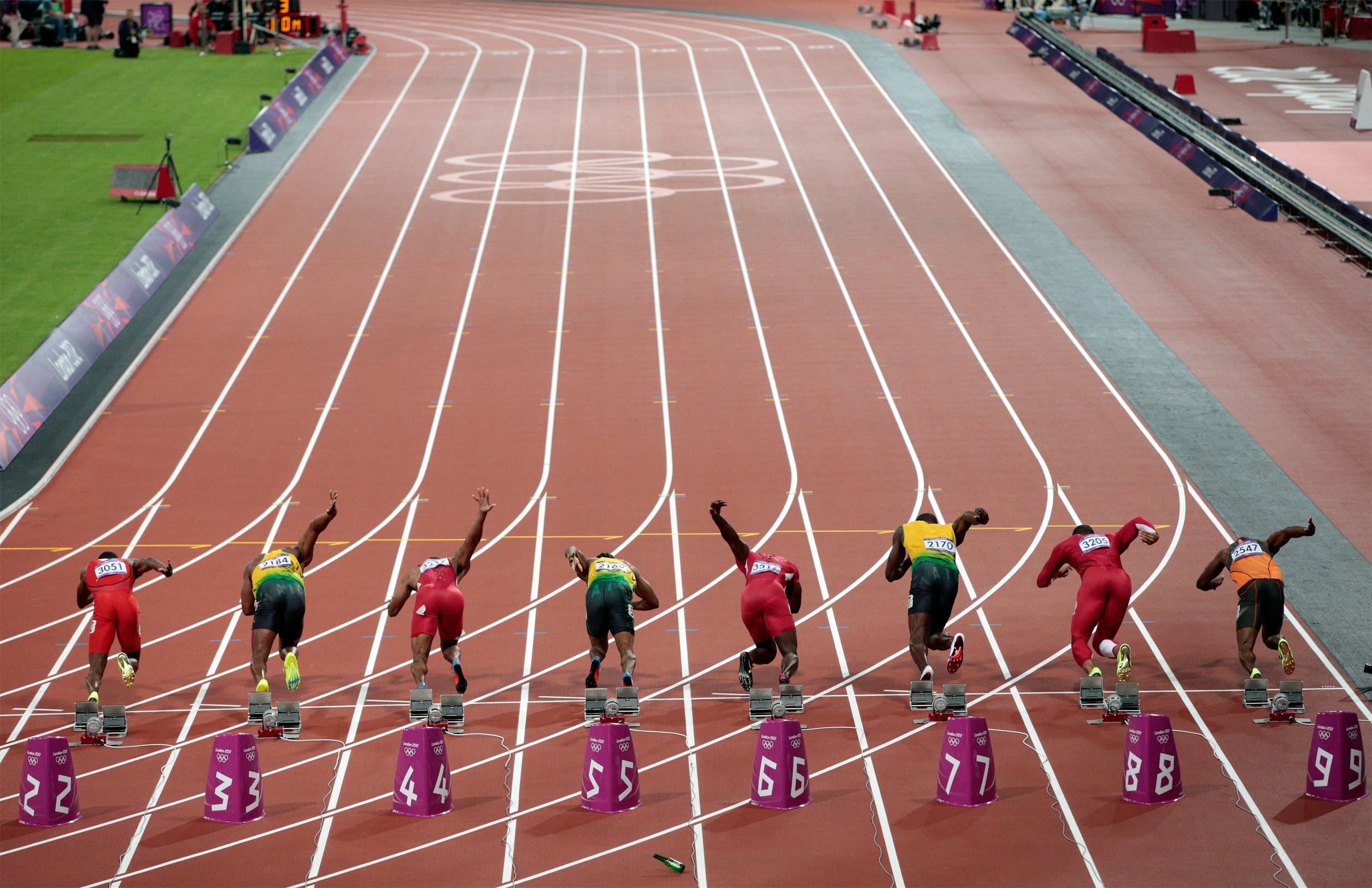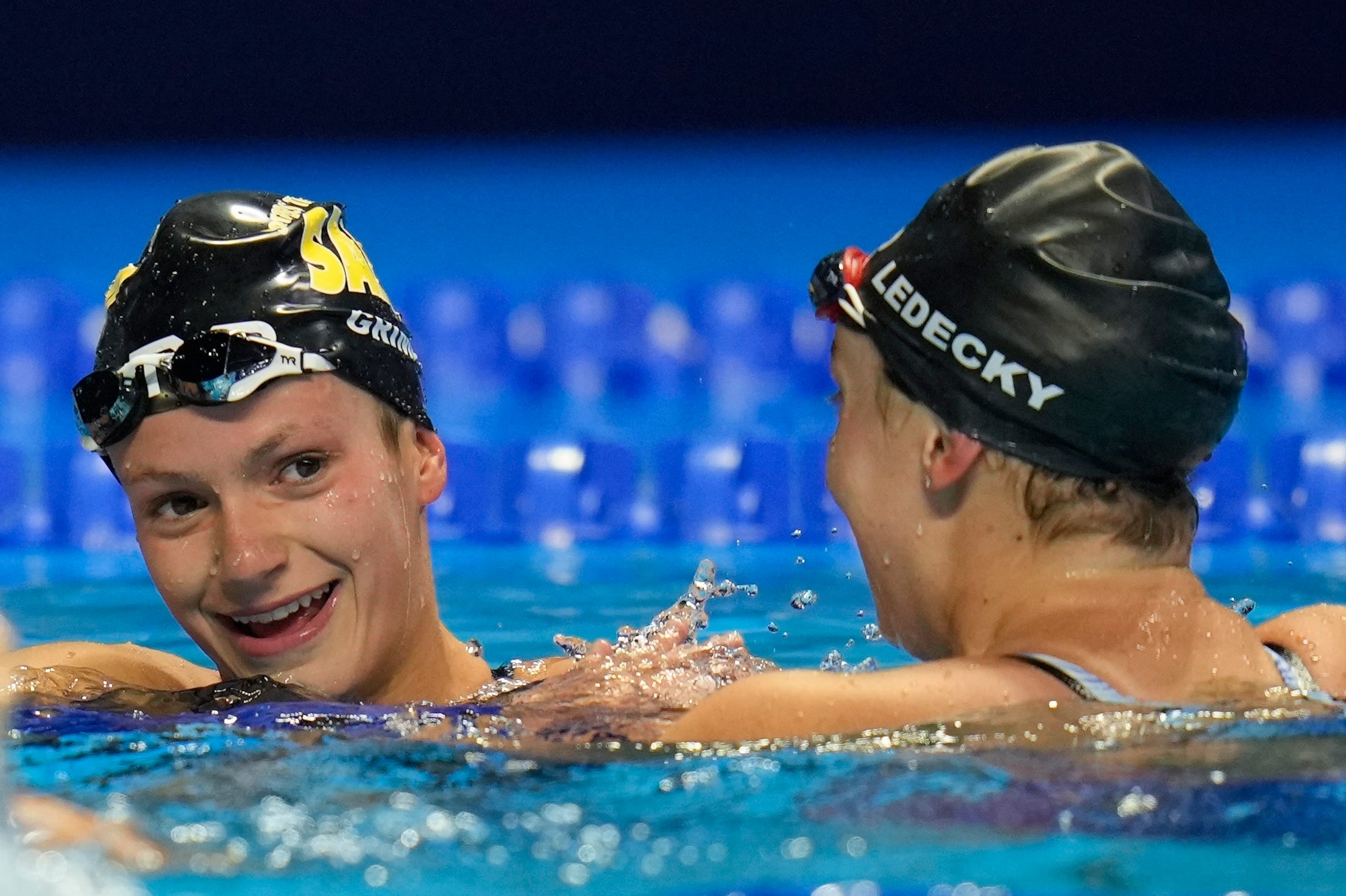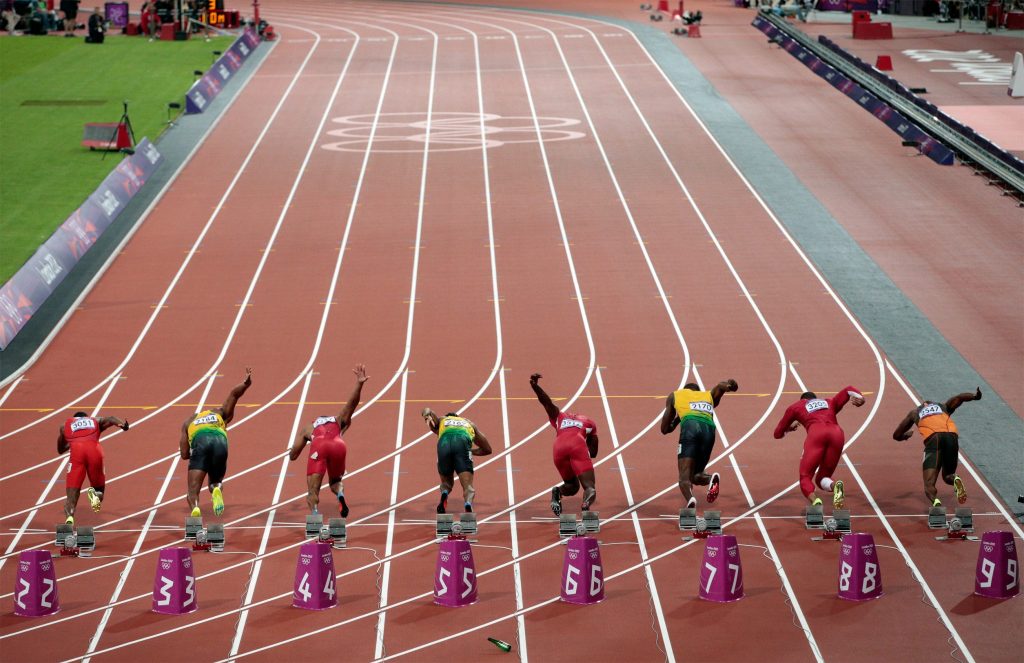
Adam Pretty/Getty Images
- Calorie burn is a reflection of intensity, duration, body size, and metabolism.
- Events like the marathon, marathon swimming, and triathlon burn the most during the event.
- Short, intense sports may mean more calorie "after-burn."
- Visit Insider's homepage for more stories.
When Olympic athletes hit the pavement or the pool or the court, they're not aiming to burn calories – they're jonesing to win. But knowing how many calories they burn during both training and events is important so they can fuel and recover appropriately.
Eat too much, you feel weighed down. Eat too little, you crash – or worse, begin to lose muscle, bone mass, and hormone functioning as your body looks inward for energy.
Sports and events vary widely in their ability to torch calories, which depends not just on the actual exercise but also on the athlete's body weight and metabolism.
Insider talked to personal trainer Craig Weller of Precision Nutrition about which athletes in Tokyo are likely to be burning the most, and least, calories.
The marathon and other long-distance sports burn the most calories during their events
How many calories athletes burn reflects both intensity and duration. At the Olympic level, everyone's operating at the highest intensity, so duration matters most, Weller said.
Olympic marathon swimmers and triathletes each clock in just under two hours, while the marathon record is just over two hours - eeking out a likely calorie burn victory.
Take US runner Galen Rupp, whose best time is 2:06 - a 4:49-minute-mile pace for 26.2 miles straight. Given his 134-pound size, he burns about 20.6 calories per minute for a total of 2,596 calories during the event, according to calculations using the Compendium of Physical Activities.
However, his actual calorie burn may be less since part of endurance athletes' training focuses on teaching the body to use each calorie smartly. "Their whole goal is to expend as little energy as possible," Weller said. "That's one of the biggest differences between training for a sport versus exercising."

AP Photo/Jeff Roberson
Swimmers likely burn the most calories overall due to the duration of their training
While running burns slightly more calories than swimming minute-by-minute given the force of the body on the ground, Weller said, swimmers likely burn more than other athletes day-to-day given their long training hours: often around six hours of straight swimming, day after day.
While other Olympians may put in the same hours, they tend to have more variety, with regular rest periods worked in, since higher-impact sports demand it.
Retired swimmer Michael Phelps' famous 10,000-calorie a day diet makes sense when you consider he burned about 5,182 calories during training alone. "The issue becomes putting those calories back," Weller said. "They have to work really hard to eat a lot of food.
Short bursts of powerful movements mean more calories burned after the event
Compared to steady-state events, sports that require short bursts of hard work, like sprints, soccer, and pole vault, seem to continue torching calories at a more elevated rate after they've cooled down. One study found that performing just five 30-second intense bursts of exercise - a total of only 2.5 minutes - burns about 200 extra calories a day.
That after-burn is part of why trainers love high-intensity interval training for non-Olympians: Though controversial, some research shows it can promote weight loss while preserving muscle, hence sprinters tending to have a more muscular frame than long-distance racers, Weller said.
Technical events burn the least calories
Unsurprisingly, sports like archery and shooting aren't huge calorie burners, but they require immense technical skill and mental focus.
That takes energy too - and the right kind. While endurance athletes have been known to house donuts mid-race for energy, precision athletes tend shy away from sugar or caffeine to avoid the jitters and remain stable.

